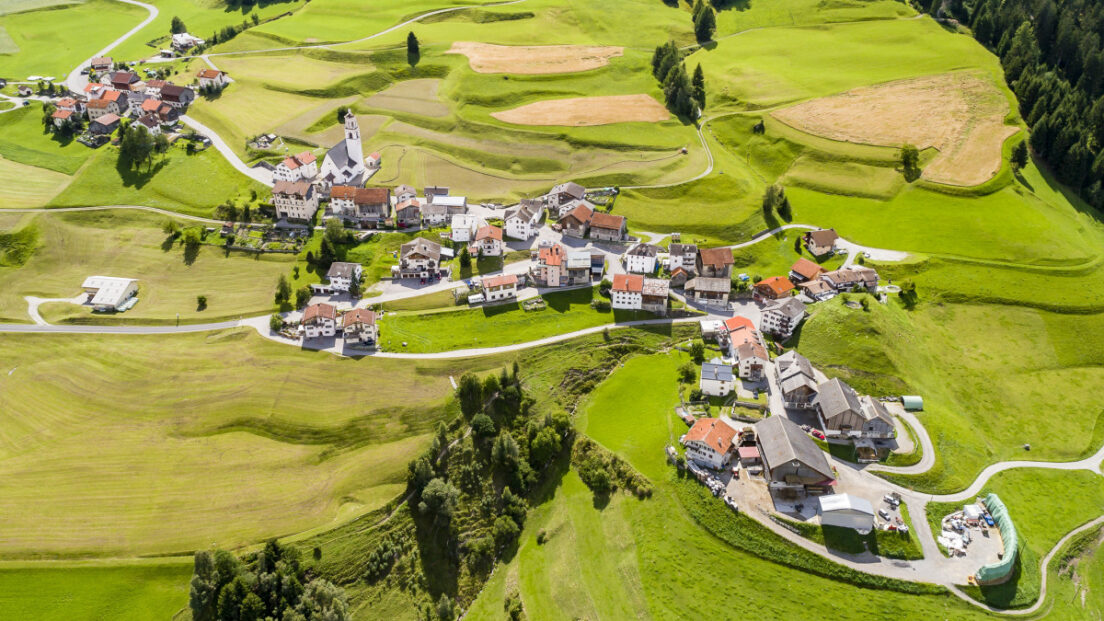Cooperative planning processes for more affordable housing in mountain areas

Affordable housing is no longer a matter of course, even in mountain regions. Against this background, the question arises as to the conditions under which co-operative planning processes with private owners can make a contribution.
Concerns about affordable housing have spilled over from urban centres to mountain regions since the coronavirus pandemic: the unbroken demand for second homes, the shortage of building land intended by the Spatial Planning Act and the price spiral in the old legal housing stock fuelled by the Second Homes Act are contributing to the fact that affordable housing for skilled workers and families is becoming scarcer and residential mobility is decreasing.
Against the backdrop of rising construction and financing costs, the question arises as to whether the provision of affordable (rental) housing in the Alpine region can be encouraged through cooperative planning processes. To this end, dialogue processes that have proven their worth in large-scale projects with professional developers and institutional investors in the lowlands must be adapted to smaller projects by private owners.
The first prerequisite for a successful dialogue with owners is for municipal councils to clarify where they stand and what they want: The broadest possible political consensus is needed on what characterises the municipality as a residential location, which target groups it wants to appeal to, what the municipality can offer these target groups and how the housing supply should be supplemented.
The second prerequisite is that municipal councils communicate to property owners which planning law decisions are pending in the short, medium and long term, and how opportunities for action are changing. The aim is not to dictate a direction to landowners willing to build, but to clarify with as many owners as possible who would be willing to activate building land and planning reserves or invest in residential construction under what conditions.
A major challenge here is communicating the complex planning and planning law requirements and processes, which are difficult for laypeople to understand, and the emotionally demanding and controversial debate about zoning out and market interventions.
Another challenge is the small-scale social structure in many mountain communities: Management boards and owners know each other, there are previous histories. In smaller municipalities in particular, written surveys or joint information and discussion events with neighbouring municipalities can defuse misunderstandings and mistrust somewhat.
Finally, municipalities must find ways to better understand and involve second home owners. Although relationships are strained in many places, surveys and focus groups show that around a third of second-home owners from Switzerland and abroad would be willing to contribute to the provision of housing for locals and skilled workers.
The prerequisite is that municipalities involve second-home owners on an equal footing, prepare investment-ready projects and take risks. Information events on community development and a regular exchange with interested (also non-organised) second home owners help to build relationships and create trust.
The third prerequisite for a successful dialogue with owners is that all stakeholders involved are willing to make compromises in order to create affordable living space that meets the needs of locals and newcomers. This is exemplified by the conversion of existing buildings in protected sites, where goodwill and pragmatism are needed to defuse conflicts of interest and find viable solutions.
Cooperative planning processes rarely run smoothly: they require good preparation, political capital and a willingness to engage in dialogue. They do not create planning certainty. However, a clear focus and a strong commitment to finding joint solutions increase the chances that private owners will be able to contribute to the provision of affordable housing in mountain areas.